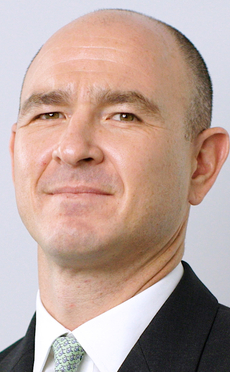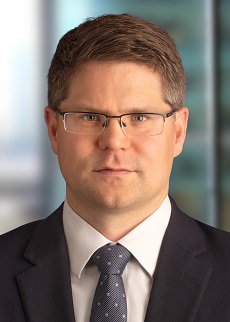Dec 14, 2022
Eurex | Eurex Clearing
Marginal gains: buy side gets set for cross-product margining
First published on Risk.net December 2022.
Faced with higher margin and funding costs, more buy-side firms are looking to optimise margin requirements across their fixed income portfolios. Here Lee Bartholomew, global head of FIC product design at Eurex, and Per Haga, global head of prime derivatives services product at Barclays Corporate & Investment Bank, discuss the opportunity for cross-product margining (CPM) to drive cost savings and efficiencies and how buy-side clients can maximise value from the process.

What is CPM? Who is using it, and why?
Lee Bartholomew, Eurex: CPM is designed to optimise margin offsets across the portfolio of products within fixed income – that is, between over-the-counter (OTC) interest rate swaps (IRS) and listed derivatives.
End-clients have seen increasing pressure on profit margins. The trend towards electronification and growth in passive products have contributed to this margin compression. So, any way in which a central counterparty (CCP) can optimise margin offset is beneficial. The use of CPM has grown in recent years and there are several CCPs vying to offer this.
The added value for clients is that they can focus on future positioning, as well as optimisation in their existing portfolios and generating more alpha within their business.
What’s driving demand for CPM in the current environment? What trends are you seeing?

Per Haga, Barclays: Clients are looking for margin savings: finding a way to pay less margin while keeping appropriate margin for the risk they’re putting on – achieving cash efficiency in meeting margin requirements.
By way of context, Barclays was one of the first clearing members to go live with CPM on CME in 2013, and we have a strong history of portfolio margin with our Global Netting offering. So it's something we’re comfortable with and understand the client drivers for, and it’s usually around margin efficiencies as clients express their risk through both futures and swaps.
Lee Bartholomew: We are seeing real interest from the asset management community. And we’re starting to see hedge funds wanting to transition some portfolios to manage their margin.
The higher market volatility has not stopped clients from switching over and activating CPM. In fact, the sell side is more focused than ever on readiness, and many are positioned for their clients to go live this quarter. CPM is still relatively nascent in terms of overall volumes at Eurex, but it is growing.
How has the Eurex proposition evolved? What is Eurex’s unique selling proposition in this area?
Lee Bartholomew: We have worked intensely with our members to increase readiness of the sell side to offer CPM to end-clients.
As an exchange, we offer ease of access to our infrastructure, reporting and calculations so that clients can run simulations on existing and potential portfolios.
In terms of the product mix, Eurex has had a very strong position in listed derivatives, but it has lacked any significant OTC IRS volumes until now. As the volumes of OTC IRS build along with market share, the topic of CPM has come more to the forefront for end-clients. Those who have looked to migrate their OTC IRS from the incumbent to Eurex are the real money asset managers and the Dutch pension funds. We are steadily building our capabilities to allow investors to offset both the short-term and long-term interest rate exposures against the OTC IRS position.
The way liquidity is evolving on the IRS side, and in other markets, allows Eurex to be flexible. Some of our competitors have looked to build competing offerings in other markets and were not able to grow their CPM capabilities because they weren’t able to build scale in those markets. Therefore, any offsets they were giving clients were eroded by liquidity and directionality. Eurex is in a better position to manage that process.
What impact can CPM have on a typical client and portfolio, and what other factors should they consider when approaching CPM?
Lee Bartholomew: Clients should consider what their global portfolio looks like in specific markets (for example, EUR, USD) and compare the offsets they would get versus the risk they have across CCPs. Some will gain significant netting benefits against their dollar portfolios, and so forth. But they won’t necessarily get the offsets versus their listed derivatives. So, as well as the margin they are posting at one CCP, they should consider the margin they can save by migrating a portion of their EUR-denominated portfolio over to Eurex. That would give them a reduction of their overall margin postings. In an average portfolio, margin offsets can be as high as 70% or more per client.
They are also considering liquidity – being able to get in and out of positions in a cost-effective manner. And that is going to become equally as prevalent as electronification develops on the buy side and impacts the cost of execution and satisfying best execution needs. You need a multifactor approach when it comes to making this decision, but some of the most important factors are churn of portfolio, type of business, directionality and types of strategies.
Per Haga: The trade-off clients will have to make is between short-term margin savings and potential liquidity risks. Eurex is the primary CCP for European government bond futures, and so CPM is Eurex’s strategy of helping to attract IRS liquidity.
On the one hand, if you’re going to put on a swap and hold it for a long time, short-term liquidity concerns aren’t such a big deal, but margin savings become more important. On the other, if you’re going to trade out quickly, then short-term liquidity factors are more important and margin savings less so.
Even where clients get margin offsets, they will have to think about the potential liquidity of the product – the swaps they’re trading short term versus long term, whether the margin offsets become material financially.
What are the main challenges involved in implementation?
Per Haga: Eurex has taken a different approach to other CCPs. With Eurex’s model, you put all the futures and swaps in the same account and then run the calculation rather than keeping them separate and moving a select amount of futures into the swap account to offset risk. So, we are having to adapt our systems to that structure. It’s a new approach to the operational mechanics around CPM.
Similarly, clients will need to get used to the approach and the reporting. Because they need a dedicated account at the CCP, clients have to sign up for an individual segregated account for both futures and OTC clearing so they have all their positions in one account for the CCP to run the margin offset. It’s not groundbreakingly complex, but it is work that has to be done.
Lee Bartholomew: Accessibility is paramount for the success and longevity of any exchange’s product offering. Initially, we built the solution in the cloud, but we found that some clients are not comfortable having disclosed data in public. So, we built an on-premise application programming interface with an enhanced algorithm and ease of access that the banks can run within a predefined timeframe.
It is also important that we help clients understand how the algorithms work and what that means in terms of default management, as well as in terms of numbers of stress scenarios they can run and how frequently, and how easy is it for them to simulate portfolios in our system.
How do you expect this business to evolve?
Per Haga: It really comes down to the evolution of Eurex swaps liquidity and clients’ sensitivity to that liquidity.
Margin optimisation is an incentive to clear swaps with Eurex, but where swaps liquidity is located is a complex calculation, and each client will need to decide what is best for them. It's particularly attractive for clients that are already using Eurex to clear their IRS.
It's important for Barclays, as a leading clearing broker, to provide access to new functionality offered by the CCPs.
Lee Bartholomew: Eurex can establish itself as a cross-asset CCP from a CPM perspective. So our ambition is to be able to offer further iterations of CPM as clients bring new markets into their overall portfolios. We could naturally extend our product offerings to increase our offset further. For example, we are now focused on enhancing the algorithm and the system for short-term interest rates. We are already working with clients to set up other markets, such as repo, for example, and repo versus listed. Elsewhere, we are focused on getting our numbers higher on the IRS side.
As we create our product road map, we consider whether the new markets we want to evolve into are complementary to the product suite. We also consider risk management from a default and liquidity perspective. We are not trying to be everything to everyone. We prefer to excel in those markets we choose to be in – ensuring there is fungibility between product and risk.
